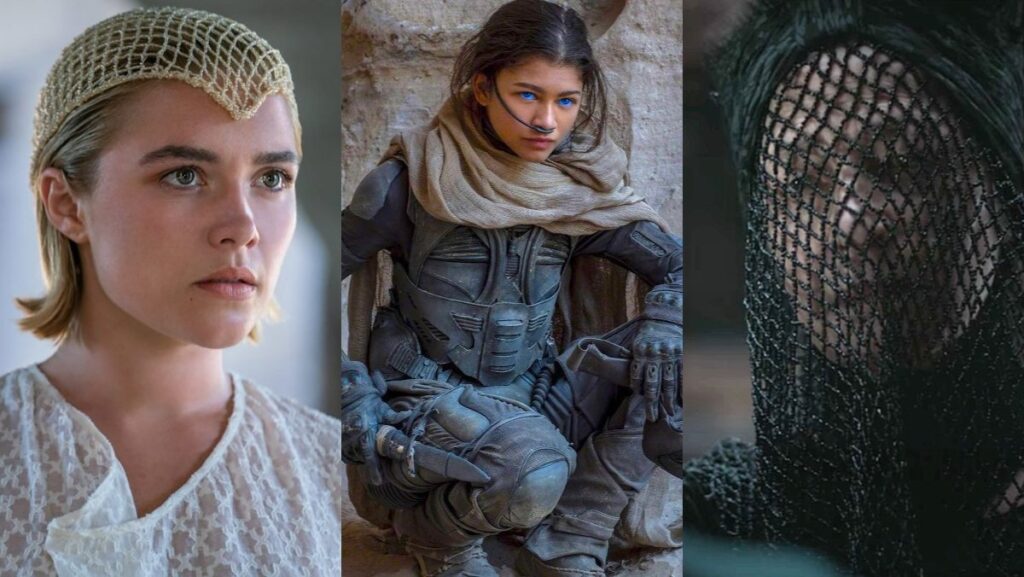Dune: Part Two is here and it’s a breathtaking epic with themes of tragedy, heroism, appropriation, and history woven into every frame. One walks away from the film almost exhausted by the overwhelm. It’s amazing how swiftly that spectacle sucks us into the desert of Arrakis and doesn’t let up. Director Denis Villeneuve expertly adapted Frank Herbert’s novel for the screen. And best of all, he understood one of the book’s most powerful assets: its women.
The female characters of Dune: Part Two aren’t just notable for their screen presence or intrigue. In Dune, women are the real masterminds. From the Bene Gesserit pulling political strings to Princess Irulan recording the galaxy’s intricate history, women shape the greater universe, even when they lack immediate power.
The women of Dune mirror many real-life figures from history—and many from myth, too. Herbert was an avid reader and scholar, with interests that spanned topics from history to ecology. So naturally, his characters evoke figures from other eras and cultures. And while he did a fantastic job of making each character in Dune unique, that mythical flavor still lingers. That’s kind of the whole point, too. There’s House Atreides with its bullfighting lineage. We also have the Harkonnens with their militaristic prowess. Both are archetypical families who forge their own stories and places in history.
With that in mind, let’s take a closer look at the women of Dune: Part Two. Who they are, the heroines—and villains—they emulate, and how that plays into Dune’s larger evocation and elucidation of history, religion, and culture.
Chani (Joan of Arc)

Chani, Paul’s Fremen lover and mentor, is one of Dune: Part Two’s foundational characters. She’s also a character who’s arc differs from film to screen. In the book, Chani is more loyal to Paul and his role as Kwisatz Haderach. In the film, she’s more dubious—although she believes deeply in Paul the person. But Chani’s real power comes not from how she relates to Paul but who she already is. A woman of resource, a fierce survivor, and, eventually, a hero of battle.
Chani recalls many figures from myth and history. Boudicca, queen of the Celtic Iceni tribe in ancient Britain, who led a rebellion against the Roman Empire, her people’s oppressors. Zenobia, Queen of Palmyra, who also led a rebellion against the Romans. Penthesilea, the Amazonian queen from Greek mythology, who fought in the Trojan War.
But the figure that springs most to mind is Joan of Arc. The same way that Chani plays a pivotal role in the battle for Arrakis, Joan—a medieval French military leader—played a pivotal role in the Hundred Years’ War. Though Chani’s faith wavers more in the film than Joan’s did in real life, they are both still forces (at least allegedly) of religious prophecy. And as fighters in times of combat and war, they are also both notable for challenging expectations of gender norms and the roles of women in society.
Lady Jessica (Cleopatra)
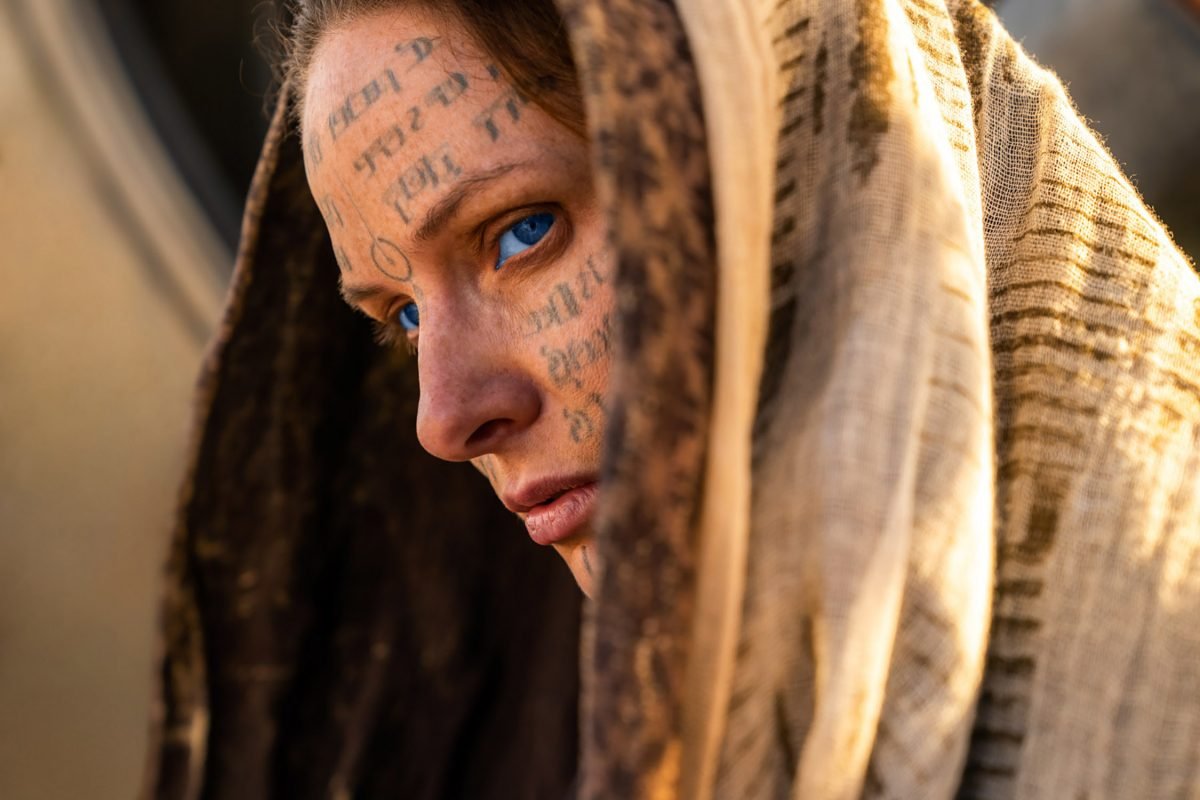
Paul’s mother, Lady Jessica, grows more sinister in Dune: Part Two. As a member of the Bene Gesserit, her behind-the-scenes plotting comes easily. And her role as mother to messiah gives her a complex that she asserts for personal and political gain. She’s not unlike many other figures of myth and history in that way. Like Eleanor of Aquitaine and Isabella I of Castile, Jessica is a noble consort who uses her family name to control and colonize. Like Empress Matilda, she maneuvers herself through the challenges that can help her—and her children—secure a powerful position.
But perhaps the most notable figure she evokes is Cleopatra. Like the Queen of the Ptolemaic Kingdom of Egypt, Jessica is known for her political acumen. Both forge alliances to maintain their powerful holds. And both use their romantic relationships to secure these roles. (Cleopatra with the Roman leaders Julius Caesar and Marc Antony, Jessica with Duke Leto II Atreides.) While not a direct 1:1 in terms of title and context, both women utilize their inherent skills and savviness as women to stay in total control—for as long as they can.
Gaius Helen Mohiam (Morgan le Fay, Oracle of Delphi, & Catherine de’ Medici)
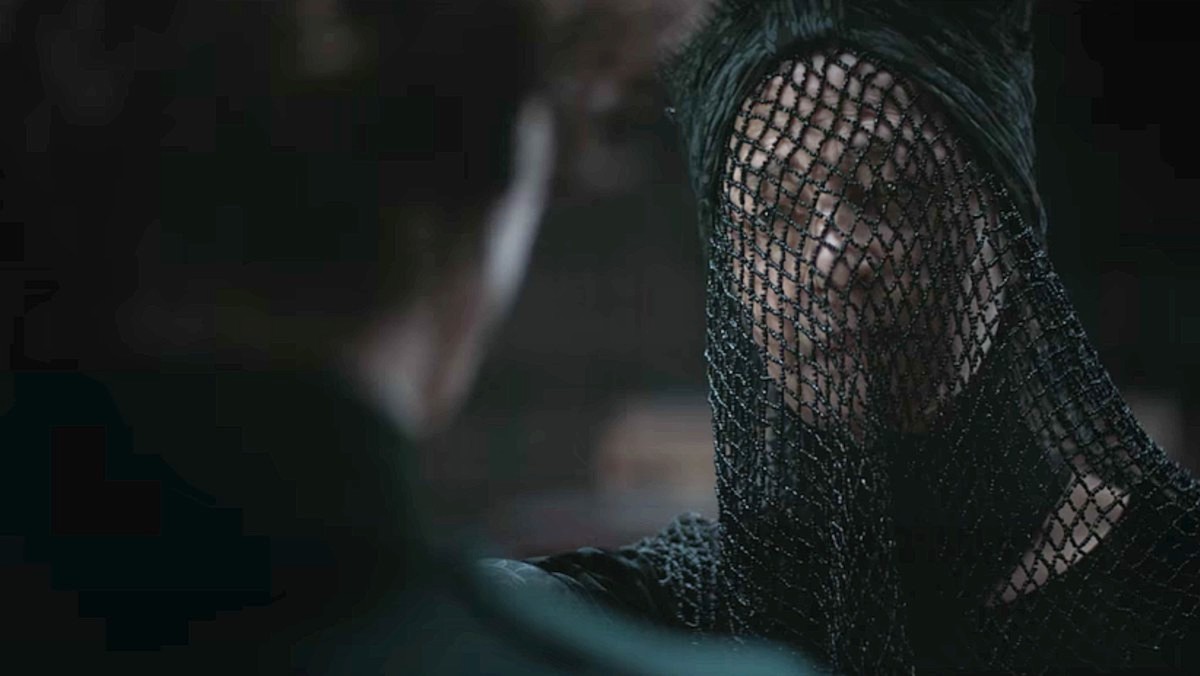
The Bene Gesserit are the real string-pullers of the Dune universe. And the most notable—and powerful—Bene Gesserit is Gaius Helen Mohiam, the Reverend Mother. Though she only shows up in a few scenes, they are all key to understanding the political placements and challenges of the Known Universe. We learn through her how the Bene Gesserit planted the seeds for the Kwisatz Haderach and how Houses Atreides and Harkonnen fit into the master plan.
The Reverend Mother is notable not just for the political chess she plays, but for the way she plays it. With preternatural training and intuition, not unlike that of a witch. That aligns her story with many sorceresses of ancient myth. Think Morgan le Fay, who helped shape the destiny of King Arthur and his knights. Or the Oracle of Delphi, a priestess of ancient Greece who Apollo sought for prophetic advice. The Bene Gesserit as a unit are also reminiscent of the Fates from Greek mythology, three sisters who controlled human destiny.
There’s also Catherine de’ Medici, a real historical figure. As Queen of France, she was known for her involvement in the affairs of the French court. She was ruthless in her desire to maintain and influence power and order. There are a lot of similarities between Catherine and Helen Mohiam, but also between Catherine and Jessica. Which makes sense, given Jessica’s own ascent as Reverend Mother to the Fremen.
Alia (Lucrezia Borgia)
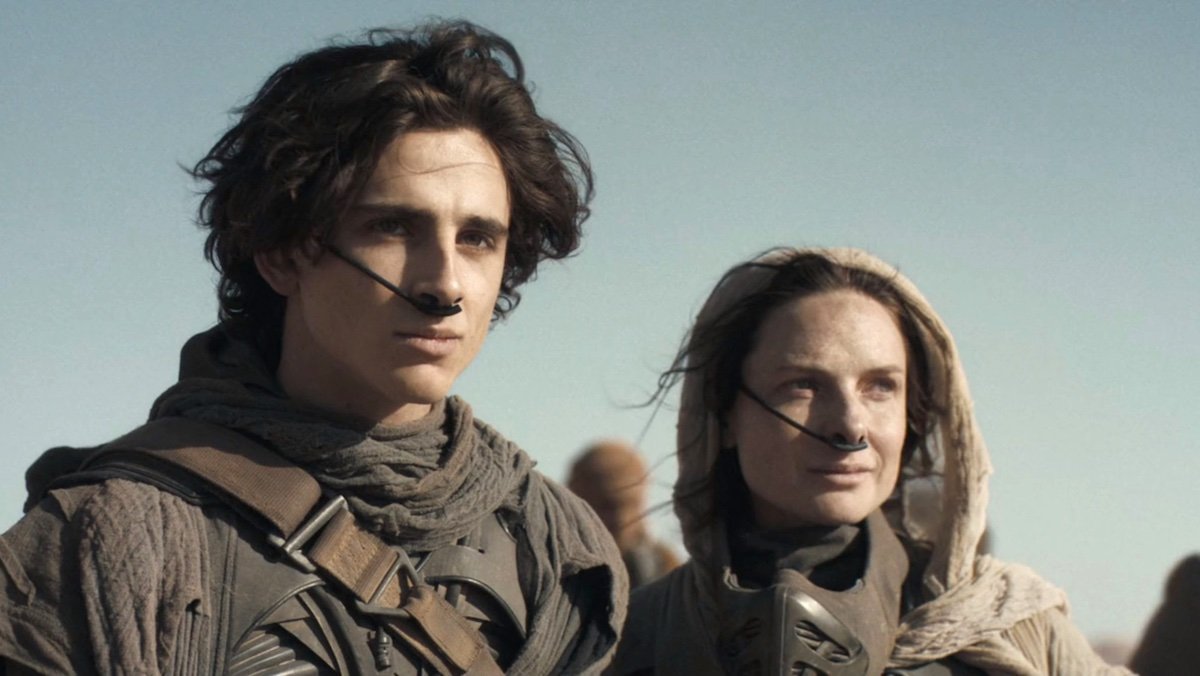
We don’t spend much time with Paul’s sister Alia in Dune: Part Two. Mostly due to the fact that she’s not yet born. You’d think that fact might hinder her role in the story altogether, but this is Dune. In Herbert’s novel, Alia is born by this point. There’s a more significant time jump, so we get to see toddler Alia with all of her prescient Water of Life/Reverend Mother abilities. The film wisely chose a different, albeit still pretty trippy, route. In it, we see Alia in the womb, speaking to her mother telepathically. Paul also sees a vision of Alia in the future, where she stands on the now-coastal terrain of Arrakis and tells him a family secret.
Because of the unique circumstances of Alia’s birth, she is born with the skills of a Reverend Mother. This makes her unlike any other person in the Dune universe. It also aligns her with similar figures from myth, namely Cassanda of ancient Greece, who was both blessed and cursed with the gift of prophecy. And also Semele, mother of Dionysus, whose connection to a divine figure similarly complicates her life.
Alia also brings to mind real-life figure Lucrezia Borgia. Like Alia, Lucrezia was involved in a complex dynasty during the Italian Renaissance. She was an accessory to familial machinations and intrigue, forcing her into a role not unlike poor Alia Atreides. Both born unwilling cogs in a scheme beyond their ability to control.
Irulan (Anna Komnene)
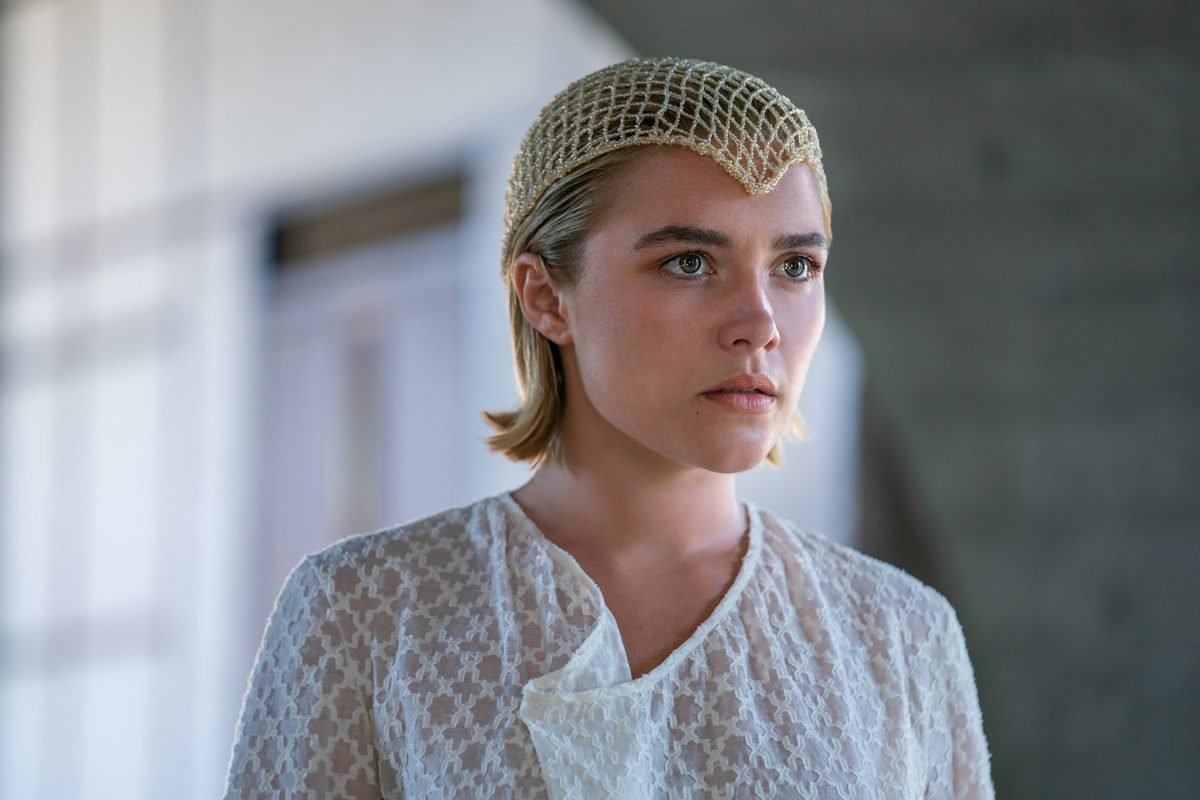
In Dune: Part Two, we’re introduced to Princess Irulan, daughter of Padishah Emperor Shaddam IV. She is also the daughter of a Bene Gesserit named Anirul, hence her connection to the group in the film. In Herbert’s novel, Irulan is the narrator, her recordings of history serving as epigraphs before each chapter. She also becomes an important figure in Paul’s life by film’s end, setting her up for quite a journey in the story to come.
Given her role as daughter of an emperor and future wife of a messiah, Irulan has a lot of historical and mythical counterparts. Her chronicling of galactic history is reminiscent of the Greek poet Homer, whose epic poems Odyssey and Iliad shaped the narrative of Greek mythology. She is also similar to Herodotus and Thucydides for the same reason.
In terms of more directly historical figures, Irulan is very similar to Anna Komnene, a Byzantine princess who recorded the Alexiad, an account of her father emperor Alexios I Komnenos’s reign. Other women who chronicled and philosophized on their respective histories include Diotima of Mantinea, the daughter of Tacitus (name unknown), and French writer Madame de Staël.

